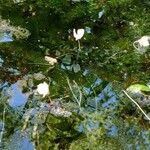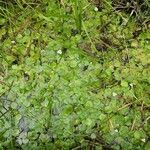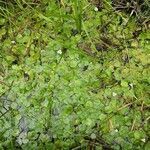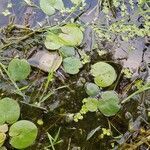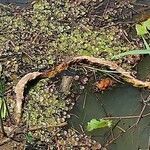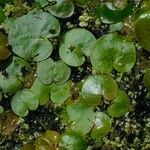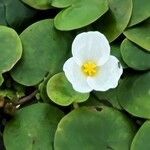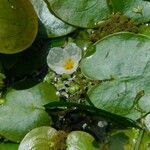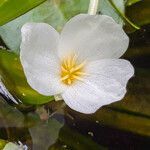Much like Limnobium spongia in aspect, but the lvs more consistently cordate-orbicular, less obviously spongy beneath, and with more broadly arching (even initially descending) lateral veins; dioecious; stolons with seasonally dimorphic terminal buds; pet ca 1 cm, 2–3 times as long as the sep, white with a yellow basal spot; outer (antesepalous) stamens basally connate with those of the third cycle; anthers ca 1 mm long and wide; styles 6, ca 4 mm overall; 2n=28. Slow-moving water, ditches, and pools; native of Europe, intr. and spreading, from Que. to s. Ont. and n. N.Y. along the St. Lawrence and Ottawa rivers and along lakes Erie and Ontario.
A floating plant. It keeps growing from year to year and has stolons or horizontal stems. It is about 30-50 cm long. The leaves are circular. They are thick and heart shaped at the base. They are about 5 cm across. The leaf stalks have leaf like structures at the base. The flowers are separately male and female on the same plant. There are 1-4 flowers. The male spadix bract has a stalk while the female one does not. The fruit are rounded and with ribs. There are many seeds.
